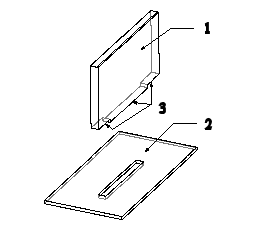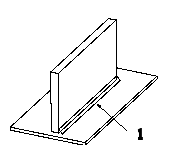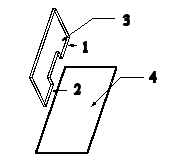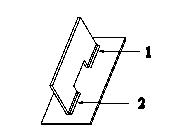Example: Creating Welds along a Segmented Trajectory
The system calculates the fillet weld trajectory for two adjacent surfaces by projecting the edge of each surface on the other.
You can weld surfaces in which the weld trajectory is broken into two or more continuous segments. These cases can be broken down into two classes, as shown in the following examples:
• Segmented trajectory: one physical weld (Example A)
• Segmented trajectory: multiple physical welds (Example B)
|
Example A: Fillet Weld of Two Plates Joined with Tap-and-Slot Construction
|
|
|---|---|
|
Exploded State (before weld)
|
Normal State (after weld)
|
 1. Surface 1 2. Surface 2 3. One five-part bottom edge |
 1. Fillet weld |
|
This example shows two plates in a "tap and slot" construction, secured by a single fillet weld. There is continuous metal-to-metal contact between the two surfaces along the desired weld path. The system can create a single weld trajectory along the contact path.
|
|
|
Example B: Fillet Weld of Two Plates, one of which has a Cutout on the Weld Edge
|
|
|---|---|
|
Exploded State (before welds)
|
Normal State (after welds)
|
 1. Edge 1 2. Edge 2 3. Surface 1 4. Surface 2 |
 1. Weld 1 2. Weld 2 |
|
This example shows two plates that make contact along several discrete edges. Each contact segment corresponds to a separate physical weld.
After the system examines selected references, it can determine that the surfaces are contacting along several discrete edges, and that the metal-to-metal contact is not continuous. The selected surfaces can be joined by several discrete welds.
|
|